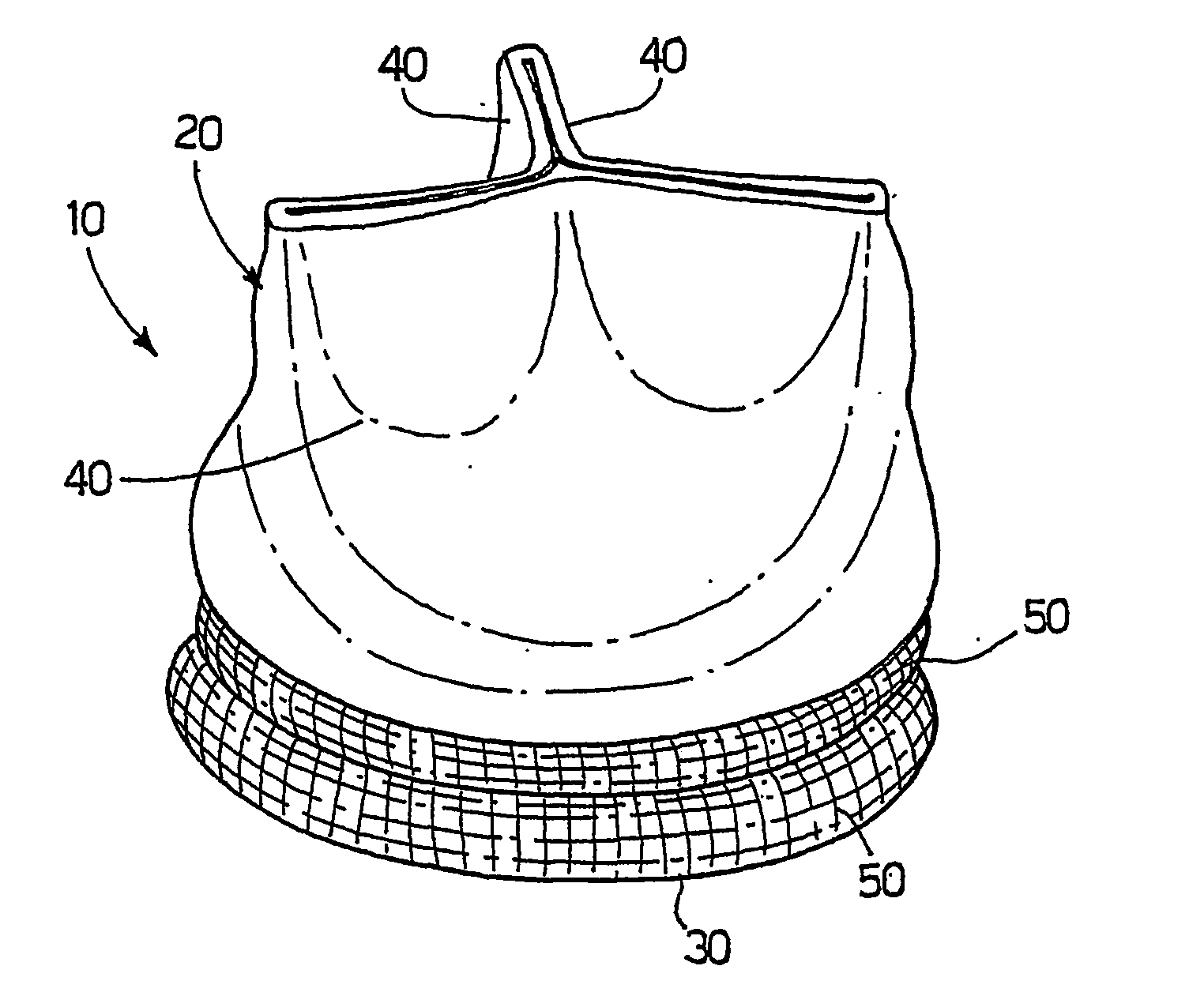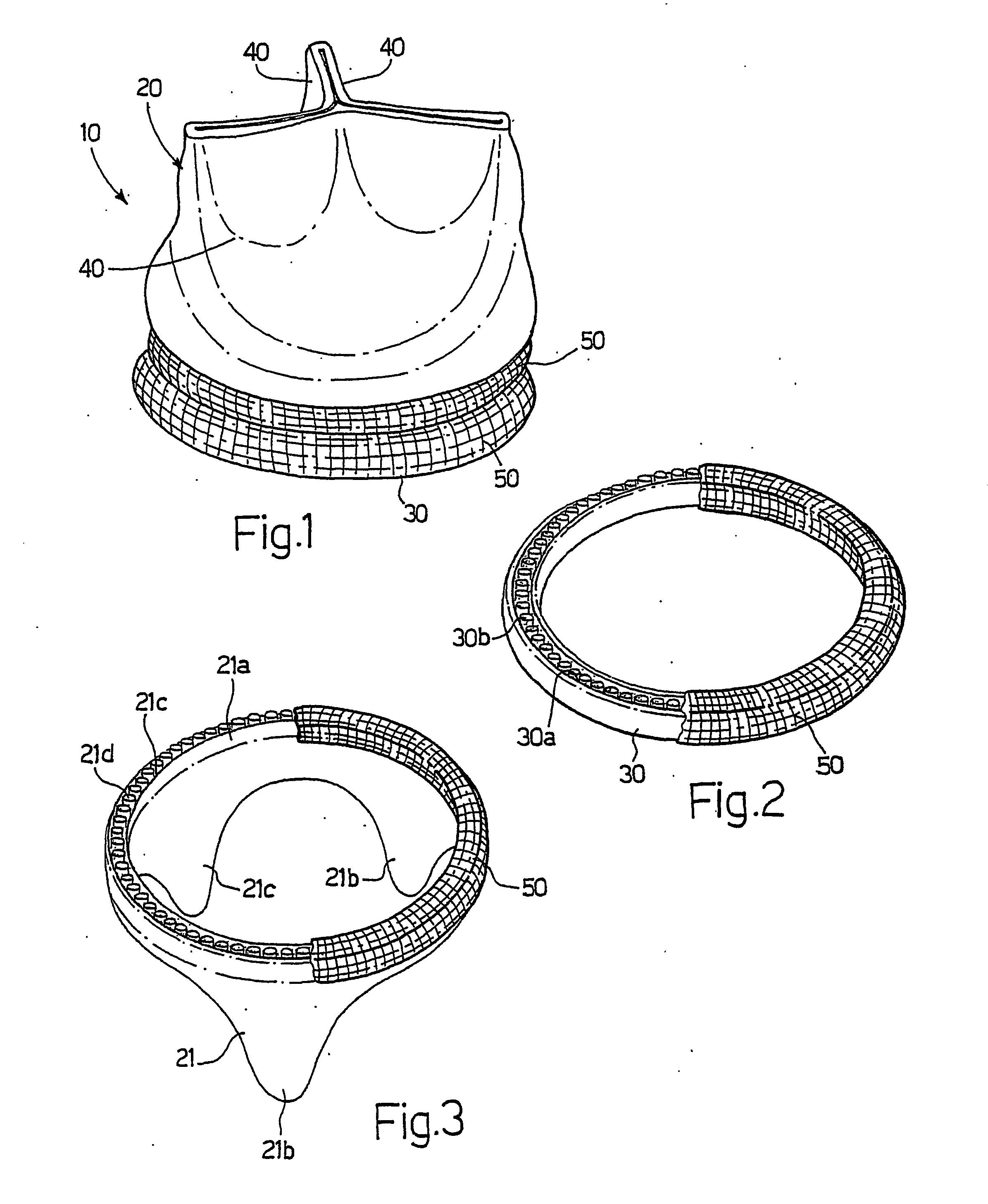Prosthetic Valve Apparatus, In Particular for Cardiac Applications
a prosthetic valve and valve body technology, applied in the field of medical prosthetic devices, can solve the problems of reducing the useful area of opening the prosthesis, unable to induce morbidity or even mortality of the operated patient, and the difficulty of implanting this type of prosthesis, so as to achieve the effect of simple, precise and safer surgical procedure for implanting
- Summary
- Abstract
- Description
- Claims
- Application Information
AI Technical Summary
Benefits of technology
Problems solved by technology
Method used
Image
Examples
Embodiment Construction
[0040] For a better understanding of the terminology used in the detailed description of the present invention, a short explanation shall be provided below. [0041] Biological valve prosthesis: Substitute of a heart valve made, partially or totally, of a material of biological origin (generally, of animal origin). The most important structural components of a biological valve prosthesis are the “valve strips” made of biological material (bovine pericardium or porcine valve strips), and a “support structure” (the so-called “stent”) made of plastic material; said “support structure” (stent) is not present in so-called stentless valves (without support). [0042] Suture ring: it is a ring made of synthetic material.
[0043] All these components (“valve strips”, “stents”, “suture ring”) in traditional and known heart valve prosthesis apparatuses are assembled during their production, in such a way as to constitute a single body and non case can they be separated from each other in the subse...
PUM
 Login to View More
Login to View More Abstract
Description
Claims
Application Information
 Login to View More
Login to View More - R&D
- Intellectual Property
- Life Sciences
- Materials
- Tech Scout
- Unparalleled Data Quality
- Higher Quality Content
- 60% Fewer Hallucinations
Browse by: Latest US Patents, China's latest patents, Technical Efficacy Thesaurus, Application Domain, Technology Topic, Popular Technical Reports.
© 2025 PatSnap. All rights reserved.Legal|Privacy policy|Modern Slavery Act Transparency Statement|Sitemap|About US| Contact US: help@patsnap.com


